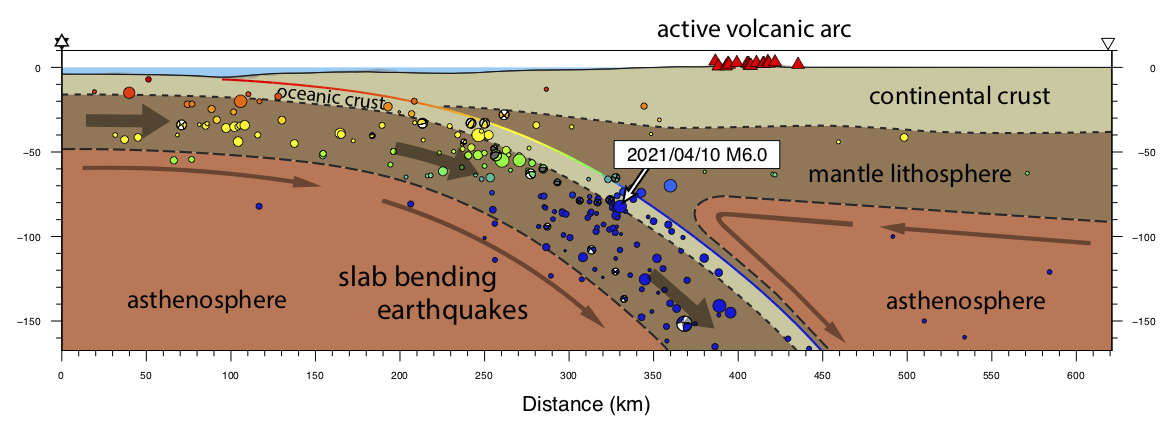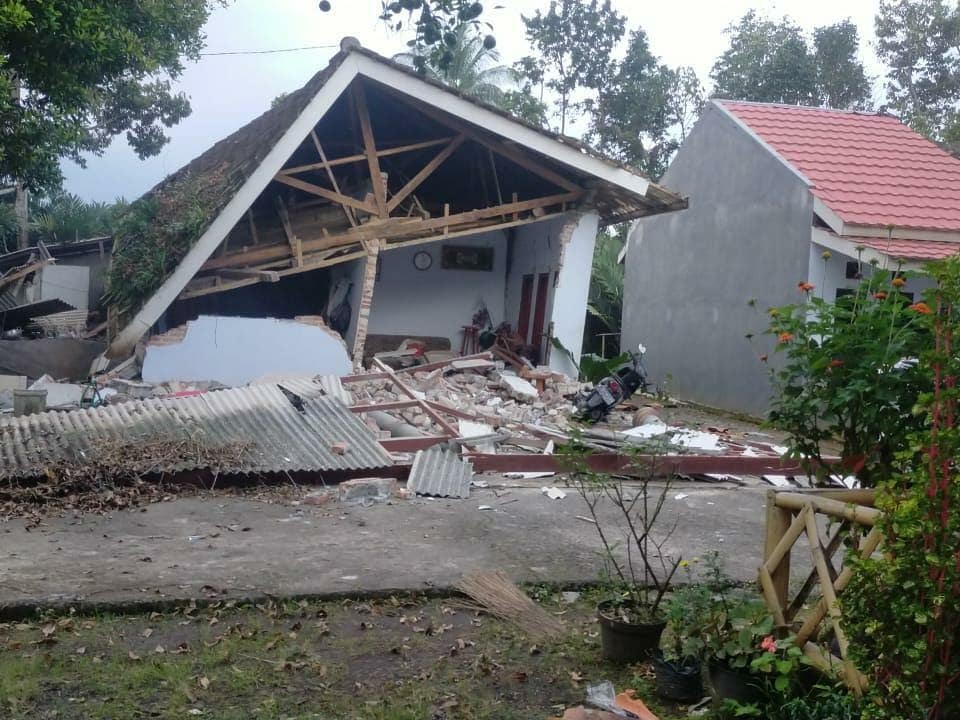The magnitude-6 earthquake that struck Java on Saturday, 10 April 2021, at approximately 2pm (local time) occurred at a depth of 82 kilometres (km), according to the United States Geological Survey. This earthquake was strongly felt in East Java and led to loss of life and property. The location of this earthquake is the main reason why it was felt so strongly.

The earthquake occurred about 60 km southwest of Malang, off the coast of Java, a region where the Indo-Australian plate dives under the Eurasian plate. In this region, the subducting plate experiences downward-pulling forces. It also experiences increasing pressure and temperature, which cause hydrous minerals to release water. These processes work together to cause the deeper part of the slab to break and generate earthquakes.
Earthquakes that occur within the subducting plate are called intraslab events. The Mw 5.5 that struck Bali in 2017 and the Mw 6 that hit Jakarta in 2018 are two regional examples of such events in recent years. Saturday’s event is also an intraslab event.

These intraslab events are generally too deep to generate tsunamis. However, they can occur below populated regions and therefore be more widely felt than events in the shallower part of the subduction zone below the ocean.
"As intraslab earthquakes break stronger faults within the slab than those that slip during earthquakes at plate boundaries (interplate events), more strain energy is converted into seismic waves during intraslab events. This results in a larger stress drop and stronger ground shaking," said Assistant Professor Shengji Wei, a Principal Investigator at the Earth Observatory of Singapore who studies ground motion generated by earthquakes to improve seismic hazard planning and the understanding of plate tectonics.

"Because they generate more high-frequency shaking than interplate events, instraslab events can trigger more rock failures onshore," said Assistant Professor Judith Hubbard, a Principal Investigator at EOS who studies active faults and long-term deformation. Such landslides led to significant damage during the 2009 Mw7.6 earthquake that struck the city of Padang in Sumatra.
"The high-frequency shaking is also more likely to damage shorter structures, while lower frequency shaking will resonate more with taller buildings," she added.
These damaging intraslab events are common, but because they occur on hidden structures within the Earth, they are challenging to assess and forecast. "One of the most efficient ways to better understand intraslab earthquakes and mitigate their impacts is to use data from high quality seismic networks to precisely constrain their physical parameters, and build models to make medium to long-term forecasts of such events," said Asst. Prof Wei.